Featured Articles
The Pulse 3.0 – 24 Canelo
Anything can happen in boxing and anything can happen in a 24-hour journey from California to Las Vegas to watch the richest fight in boxing history. I have a busy day ahead. Land in Vegas, get my media credential, hit the Andre Ward meet and greet, check in my room, get ready, and go to the fight. Let’s go!
Saturday morning 9 AM – It is Saturday 9 AM and my flight leaves in 25 minutes to Las Vegas as I walk through an empty airport towards the security area.
I overhear the Airport Security talking about Floyd Mayweather vs. Canelo Alvarez fight and can’t help to chime in.
Airport Security Dude: “I think it starts at 6 but the main fight doesn’t start until about 8.
Me: I’m going.
ASD: Oh really. You will have a lot fun. More than us that watch it on TV.
Me: Floyd’s going to win.
ASD: I know. I don’t want him to but you’re right.
11:05 AM – The taxi line in Vegas looks like a disaster but it’s moving quickly. Homie on the phone behind me is carrying what looks like a 50-pound bag and tries to put in his headset with little success. I happily offer to carry his fumbling bag for a minute while we walk and he takes care of business…. Pay it forward. What a country, the land of the free. The land of fingerprints on cell phones to protect us from the intrusion of privacy.
Yes. We live in a great country, especially during big boxing events that bring the entire world together. No matter the outcome of the big fight, it’s beautiful to see such prideful support for the world’s most essential sport.
I see people wearing TMT hats and t-shirts with pride as if they were sporting a New York Yankees logo. And I see overwhelming Mexican passion all over the place. The boxing energy is awesome. Vegas is like heaven for boxing fans on fight weekend. And yes, I’m still in line for a cab in case you’re interested.
3:38 PM – Andre Ward was kind enough to drive me back to my hotel room from the Fashion Island Mall where he was signing autographs and meeting fans.
There was a great turnout for Ward’s fan event that lasted almost an hour longer than the 12 to 2 PM slot that was expected. Whoever said Ward doesn’t have many fans must’ve forgot. The champ was signing everything from Irish national flags to previously used hand wraps. And someone had what Julie Goldsticker, Ward’s publicist, likes to call “an emotional moment” when a father started to cry after Andre took a picture with his son.
On the way back to the hotel, Ward and I naturally talked about the big fights between Danny Garcia/Lucas Matthysse and Mayweather/Canelo. We agreed that Danny Garcia wasn’t getting enough credit. We both picked Garcia to win a decision and both picked Floyd to win easy. I liked Floyd by decision. He liked Floyd to get a late KO.
5:45 PM – As I make my way to the arena I ran into two guys wearing oversized sombreros and Mexican soccer jerseys in the elevator.
Me: Man, you guys ain’t messing around. I like it.
One of the sombrero guys: Hey, we got to support our guy.
I told them how much I appreciated their passion for Canelo and I wished that there were more fans like them in the sport. Those guys came from Mexico to Vegas to support Canelo just like normal sports fans. There was no hatred for Mayweather. They actually didn’t think Canelo had much of a chance to win, they just came to the fight to root for their guy, and have a great time in the process, and I thought that was one of the coolest things in the world. So what if Canelo loses. At least they had a memorable experience as friends and sports fans.
8:05 PM – I have been in my seat in the MGM arena since around 6:30 PM. I watch the crowd fill and it gets more energetic by the minute. But so far, it is surprising to know that most of the Canelo fans I have talked to support Canelo with a sense of realism. Not many gave the Mexican star a chance to win. One guy told me that Canelo is the biggest sports star in Mexico, a much bigger star than Julio Cesar Chavez Jr, and they’re here to support the man despite the general feeling that he is overmatched against King Floyd.
It’s still around 8pm and in walks fellow TSS writer Springs Toledo. It was my first time meetings Springs and we hit it off right away. Springs is one of the coolest cats in boxing. OK, and he’s also one of the best writers in the sport. He puts stories together that need my full attention. We hit it off right away and jawed about the fights all night.
10:30 PM – Postfight, I leave the arena walking towards the press room and I run into Eddie Johnson, former small forward for the Supersonics and Rockets. I told him he was one of my favorite basketball players growing up and asked his thoughts on the Mayweather fight. Johnson said Canelo should have come out charging from the opening bell. Johnson said, “Hey, that guy (Mayweather) is elusive. If you have the entire crowd behind you, why not go after him in the first two rounds with full force. But that kid (Canelo) didn’t do that. He was boxing. I think that was a mistake.”
10:50 PM – At the post fight press conference Richard Schaefer lectures the swarming crowd of onlookers before all the formalities begin “This is a press conference not a social gathering,” Schafer said. “If you are not with the media then you should not be in here.” No one in the room seems to care for his frustration.
11:30ish – Canelo walks to the podium. I felt sorry for Canelo at the post fight. He looked pale and completely defeated. His confidence, shattered. It was a weird sight. Canelo looked like a normal 23-year-old kid for the first time since I heard his name. He looked humbled. Mayweather humbled Canelo. I think that’s fair to say. About three minutes into Canelo’s portion of the post fight, Mayweather entered the room and interrupted. He walked towards the center podium, embraced Canelo with a warm hug and huddled with the Golden Boy Promotions team while the media waited patiently to hear from the winner of the night. Canelo’s time at the dais was over. It was that brief. He sat in the closest seat he could find, put his head down, and started looking through his phone.
Midnight – I say my goodbyes and run into Virgil Hunter and Alfredo Angulo before I walk out the door. “We’ll be in the gym on Monday,” Virgil tells me. I told him I’d be there.
8:10 AM – My flight to San Jose leaves in exactly one hour. The shuttle ride to the airport costs only seven dollars but the driver needs exact change. I had six one-dollar bills and a few twenties. The shuttle driver grabbed my twenty, told me to get in the van, and said he would try to make change with the other passengers. When we get to the airport the shuttle driver says, “Hey, forget it, just give me the six bucks.” I said, “No, just keep the twenty,” and then go on my way.
Pay it forward baby, what a country!
You can follow Ray on Twitter @raymarkarian
-

 Featured Articles3 weeks ago
Featured Articles3 weeks agoThomas Hauser’s Literary Notes: Johnny Greaves Tells a Sad Tale
-
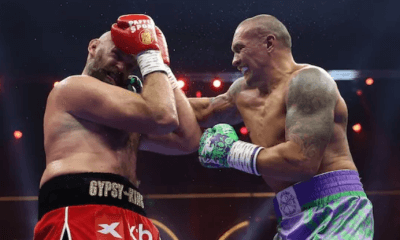
 Featured Articles2 weeks ago
Featured Articles2 weeks agoBoxing Notes and Nuggets from Thomas Hauser
-
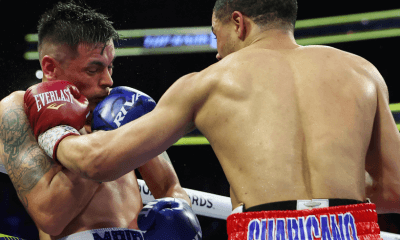
 Featured Articles4 weeks ago
Featured Articles4 weeks agoUndercard Results and Recaps from the Inoue-Cardenas Show in Las Vegas
-
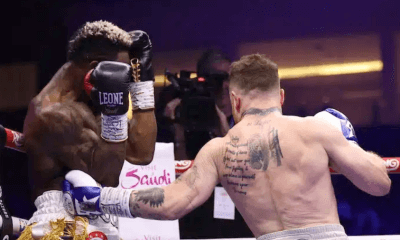
 Featured Articles4 weeks ago
Featured Articles4 weeks agoCanelo Alvarez Upends Dancing Machine William Scull in Saudi Arabia
-
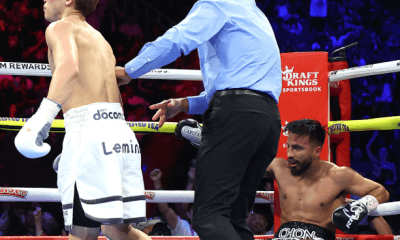
 Featured Articles4 weeks ago
Featured Articles4 weeks agoBombs Away in Las Vegas where Inoue and Espinoza Scored Smashing Triumphs
-
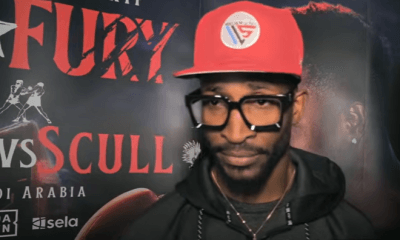
 Featured Articles4 weeks ago
Featured Articles4 weeks agoArne’s Almanac: The Good, the Bad, and the (Mostly) Ugly; a Weekend Boxing Recap and More
-
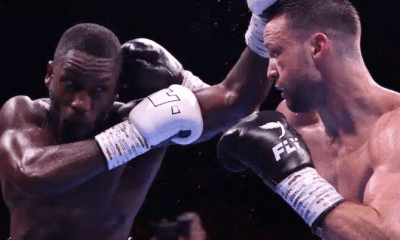
 Featured Articles1 week ago
Featured Articles1 week agoEkow Essuman Upsets Josh Taylor and Moses Itauma Blasts Out Mike Balogun in Glasgow
-
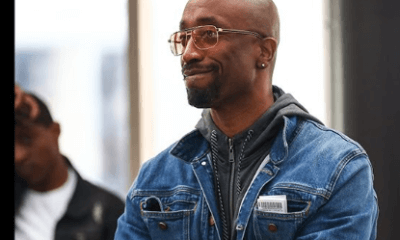
 Featured Articles4 weeks ago
Featured Articles4 weeks ago“Breadman” Edwards: An Unlikely Boxing Coach with a Panoramic View of the Sport



















